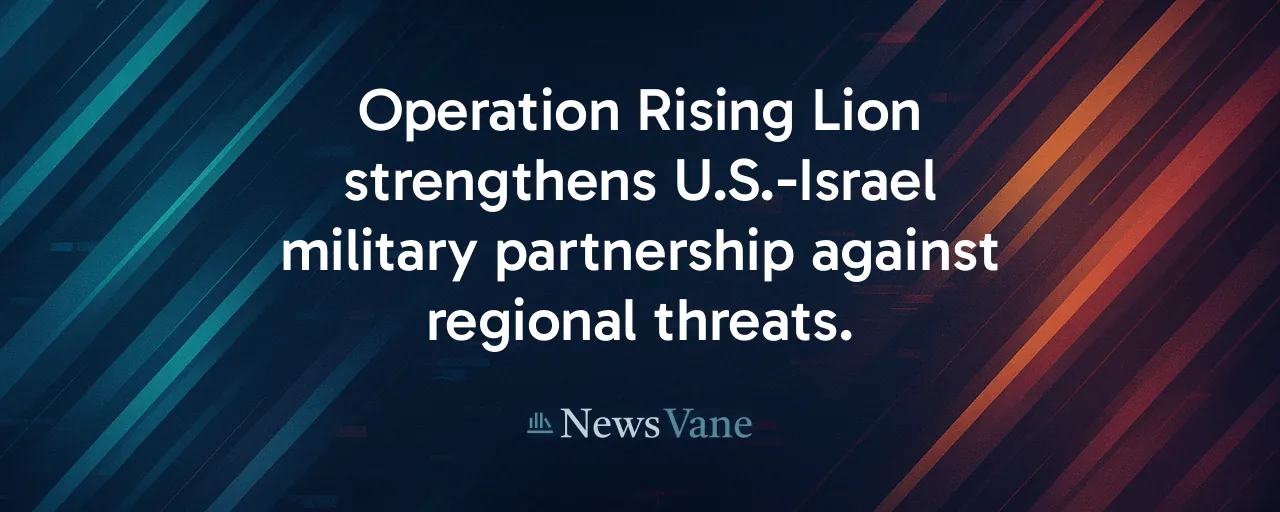A Bold Strike in the Desert
On June 13, 2025, the skies over Iran lit up as U.S. and Israeli forces launched Operation Rising Lion, a meticulously coordinated strike targeting over one hundred nuclear and military sites. The operation, celebrated in a high-profile Pentagon meeting between Israeli Prime Minister Benjamin Netanyahu and U.S. Secretary of Defense Pete Hegseth, marked a pivotal moment in the U.S.-Israel alliance. The mission crippled key facilities like Fordow and Natanz, delaying Iran's nuclear ambitions by an estimated three to five years. The strike's ripple effects extend far beyond the immediate damage, raising urgent questions about regional stability and the path to lasting peace.
The Pentagon meeting, filled with mutual praise, underscored the operation's success. Netanyahu lauded the bravery of U.S. Central Command, while Hegseth highlighted the precision of Israeli pilots and American B-2 bombers. Their words painted a picture of unshakable partnership, with both leaders emphasizing a shared commitment to countering Iran's influence. The operation, they argued, sent a clear message to the world: the U.S. and Israel stand united against threats to global security.
The Mechanics of a Historic Operation
Operation Rising Lion was a masterclass in military coordination. U.S. forces provided critical support, refueling Israeli jets and deploying strategic bombers to deliver deep-penetration strikes. CENTCOM Commander General Erik Kurilla played a central role, overseeing missile-defense systems like THAAD, which protected Israel from potential retaliation. The operation's success hinged on years of joint exercises, such as Juniper Oak, and integrated defense systems like Iron Dome, which have fortified the U.S.-Israel partnership.
The strike's immediate outcome was undeniable: Iran's nuclear program suffered a significant setback. Research indicates the destruction of key enrichment facilities has disrupted Tehran's ability to pursue weaponization in the near term. Iran's limited response, confined to drone salvoes, suggests a calculated restraint, possibly due to the operation's overwhelming precision and the deterrence it established.
A Region on Edge
While the strike bolstered U.S.-Israel ties, it also heightened tensions across the Middle East. Gulf Cooperation Council states, wary of Iran's proxies, welcomed the operation but urged caution to avoid broader conflict. In Gaza, ongoing hostilities intensified concerns about civilian casualties, with humanitarian groups calling for de-escalation. The operation's economic fallout was immediate, with oil prices spiking to $110 per barrel, signaling global markets' sensitivity to regional instability.
Public sentiment reflects deep divisions. In Israel, the strike boosted morale, with citizens rallying behind their government's decisive action. In contrast, Iranian and some Arab populations expressed growing anti-American sentiment, viewing the operation as an overreach. Within the U.S., polling reveals a partisan split: 78 percent of Republican voters support the strike, compared to just 34 percent of Democrats, highlighting the challenge of forging consensus on foreign policy.
Lessons From the Past
History offers context for understanding Operation Rising Lion. In 1981, Israel's strike on Iraq's Osirak reactor halted Saddam Hussein's nuclear ambitions, setting a precedent for preemptive action. The 2007 raid on Syria's reactor, supported by U.S. intelligence, further demonstrated the allies' willingness to act decisively. These operations, like Rising Lion, delayed adversaries' programs but did not eliminate their long-term capabilities, underscoring the limits of military solutions alone.
The 2015 Iran nuclear deal, known as the JCPOA, represents a contrasting approach. By prioritizing diplomacy, it temporarily curbed Iran's nuclear activities but unraveled after U.S. withdrawal in 2018. These historical moments highlight a recurring tension: military action can buy time, but sustainable security often requires diplomatic follow-through.
Balancing Strength and Stability
The operation's success strengthens deterrence but does not guarantee peace. War-game studies suggest that while air campaigns can disrupt adversaries, they risk cyber and proxy retaliation. Defense economists estimate the U.S. spent $1.8 billion on the operation, with precision munitions requiring nine months to replenish. These costs underscore the need for strategic resource allocation, especially as domestic priorities compete for funding.
Experts agree that diplomacy has an opportunity to capitalize on the strike's leverage. A revived JCPOA or similar framework could extend the pause in Iran's program, provided it includes robust inspections. Meanwhile, regional security could benefit from including Gulf states in a shared missile-defense architecture, reducing the burden on U.S. and Israeli forces.
Bridging Divides for Peace
Operation Rising Lion has reshaped the U.S.-Israel alliance, proving its military prowess but also exposing the complexities of achieving lasting peace. The operation's architects argue it paves the way for negotiations by demonstrating strength. Without addressing underlying issues, like the Gaza crisis or Iran's regional influence, the region risks further instability.
Potential compromises could bridge divides. Joint oversight panels to monitor civilian harm, tied to incremental military aid, could balance security and humanitarian concerns. A multilateral forum with Gulf partners might foster regional cooperation, while phased sanctions relief for Iran, contingent on compliance, could incentivize diplomacy. These steps require careful coordination but offer a path toward de-escalation.
As the world watches, the U.S. and Israel face a critical moment. Their partnership, forged in moments like Rising Lion, has the power to deter threats but also the responsibility to pursue peace. The coming months will test whether strength can indeed lead to stability, or if the cycle of conflict will persist.
